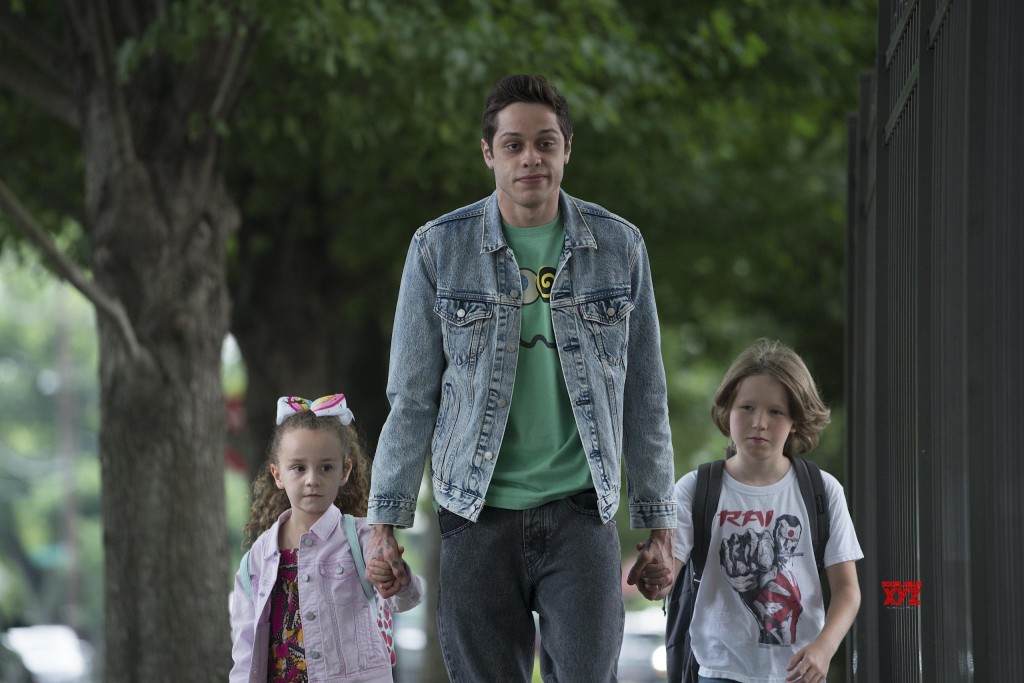Today we introduce a new screenwriting term – the “reluctant active hero.”
Genre: Comedy/Drama
Premise: Based on Pete Davidson’s life, a directionless young man, whose life changed forever when his firefighter father died, must come to grips with the reality that his mother is finally starting to date again.
About: Comedy media mogul Judd Apatow, who made Amy Schumer a star by directing the semi-autobiographical film, Trainwreck, is attempting to do the same with another polarizing Saturday Night Live comedian, Pete Davidson, best known for his public breakdowns in the media, among other things. Like many movies during these times, the film decided to ditch a theatrical release in favor of going the digital route.
Writers: Judd Apatow & Pete Davis and Dave Sirus
Details: 2 hours and 16 minutes
I love reviewing Judd Apatow movies. As narratively frustrating as he can be, there is no one in the Hollywood comedy space who comes close to him. I mean, his closest competitor is Adam Sandler. And he comes nowhere near Apatow in terms of putting out a quality comedy product.
Apatow’s secret is that he finds the realness in people. He actually does the things all the screenwriting gurus say to do. He doesn’t just create backstory for his characters. He makes sure the backstory INFORMS the characters. You see that with Pete Davidson’s character, Scott. There isn’t a single element of his persona that isn’t influenced by his father dying when he was young.
The reason Apatow’s films always fall short of being classics, though, is that he doesn’t have an inner editor. He includes everything. This not only results in his movies being long. But the pacing is always off. Scenes drift. Sequences (pro tip: a ‘sequence’ is a series of scenes) occasionally feel aimless. I mean, the first thing I noticed when I loaded up the movie was the length – 2:16. “Yup,” I said. “This is an Apatow movie.”
Scott Carlin is a 24 year old loser. He’ll be the first to tell you that. Scott lives with his mother, doesn’t have a job, doesn’t have any plans except for a vague hope to be a tattoo artist some day. Scott smokes more pot than Chaz grows, using it to cope with his total and utter worthlessness.
Scott’s life gets a whole lot worse when his mother, Margie, starts dating a man from the neighborhood, Ray. Scott’s issue with Ray is that he’s a fireman (just like his dead father) and Scott sees this as an attempt by his mom to replace dad and leave Scott behind. So Scott begins acting out, doing more drugs, and even robs a store with his friends, resulting in them going to prison (Scott is the lone friend to get away).
Scott then sets his sights on sabotaging Ray’s relationship with his mother. But it backfires when they both get into a physical altercation, resulting in Margie kicking them out (midpoint shift of the movie for screenwriting structure gurus). Without any place to go, Scott asks Ray if he can stay at the fire station, which Ray agrees to as long as Scott works.
This allows Scott to experience purpose and structure for the first time in his life, as well as understand the world his father was a part of before he died. In the end, this propels Scott into the next phase of his life, where he finally accepts the responsibilities of being an adult.
I learned something interesting about this movie while watching Bill Burr on Joe Rogan’s podcast (Burr plays Ray in the film). He said that, originally, the first scene of the film occurred in the middle of the movie. At some point, someone suggested having the scene moved to the opening.
I bring this up because one of the most important things in screenwriting is making the audience understand who a character is. It seems easy when it’s done well. But in most amateur screenplays, this is one of the most common mistakes I see. Writers don’t define who their character is. And, therefore, we never get a feel for them, resulting in us not caring what they do.
The scene in question has Scott driving his car on the highway and, for about 10 seconds, he closes his eyes completely. It just so happens that there’s a wreck up ahead, so when Scott opens his eyes, he’s seconds away from crashing into those cars. He’s barely able to steer around them and avoid the collision, but it was close.
The scene serves as a key insight into Scott’s character. This is a man who doesn’t value his existence. He doesn’t think he’s worthy of life. And it helps tell us, right away, exactly why he lives his life the way he does. So always remember that. What is that first scene you’re using to introduce your hero that’s giving us a key insight into who they are? It might be a scene later in the script you need to move.
King of Staten Island is a tale of two halves.
The first half is a screenwriting cautionary tale and the second half is a course study in the value of structure.
Let’s start with the first half first.
Despite my compliment regarding the first scene, King of Staten Island has a major hero problem. Its main character is inactive. Now, granted, his inactivity is an organic extension of his character. The whole point is to explore the life of someone with no direction. So it makes sense that he’s passive.
The problem is that his inactivity creates a first half with no momentum. Like Scott, the script is sort of stumbling around looking for a point. There is no plot other than Ray coming into the picture and dating his mom. But that can only give the plot so much structure. So we’re mostly following Scott around as he does nothing and complains about how he does nothing. Not the most riveting storyline.
Things change when he and Ray get into a fight and Scott is forced to stay at the fire station. All of a sudden, the script has structure because the station has structure. Scott now has something to do every day. And we feel like we’re progressing. He gets better at what he does, starts getting more responsibility, starts valuing the job his father did. It’s a 180 degree turn from the first half of the script.
It was a reminder that structure comes in many forms. It can come from giving your hero a goal he must achieve, which, in turn, allows you to create a set of smaller progressing goals and obstacles (which structures the narrative). Or it can come from placing your hero inside a structured environment. That is naturally going to lead to a more structured story. Ideally, you’d do both. But one can work.
Wrapping things up here, King of Staten Island is clearly Judd Apatow’s Good Will Hunting. Both movies have reluctant working-class protagonists with dead father issues who have little self-worth which they make up for in other ways (Will through fighting/anger, Scott through doing drugs). But there’s a reason Good Will Hunting is better than Staten Island. And it has to do with recognizing the limitations of the character you’re working with and designing a screenplay that makes up for those limitations.
Will Hunting does this. King of Staten Island does not. And I’ll explain the difference below in the “What I Learned” section.
Despite this, King of Staten Island is a good movie. I actually marvel at the fact that Apatow anchored his film around two non-actors (Pete Davidson and Bill Burr) and still got it to work. The fact that he was able to get convincing performances out of both of them is a minor miracle. And the fact that the movie ends better than it starts leaves you feeling good afterwards, almost to the point where you forget how wandering the first half was.
If only Apatow would hire an editor, he could take movies like Staten Island to the next level.
[ ] What the hell did I just watch?
[ ] wasn’t for me
[x] worth the watch
[ ] impressive
[ ] genius
What I learned: The Reluctant Active Hero – If your hero is passive, which can happen when you’re writing a movie like The King of Staten Island, construct a story whereby he’s forced to be active. That’s what Good Will Hunting did. Like Scott, Will Hunting was not an active character by any stretch. When it’s up to him, he does nothing. By putting him inside this mandated activity, however, Will is forced to be active. He must show up to both these therapy and math sessions or else he goes to jail. So the next time you’re writing a character like Scott who’s lazy and does nothing, consider injecting a structure inside your story that forces them to participate in something they don’t want to participate in.



